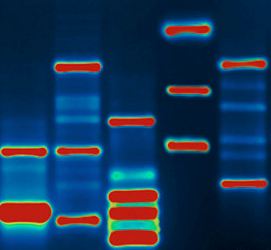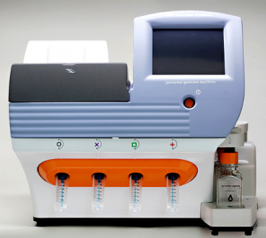This post is presented by SBE, the Society for Biological Engineering--a global organization of leading engineers and scientists dedicated to advancing the integration of biology with engineering.

The fabled Human Genome Project--the $3.8-billion international mapping effort led by the United States that ran from 1988 to 2003--was one of the last "big government" research projects, although the internet, originally a small, DARPA project, was quietly gaining momentum in the background. The ambitiously stated HGP goal, "to understand the human genome," felt t oskeptics a little too Star-Treky, representing the rump-end of Kenndy-Johnson-era big government idealism. I don't even want to talk about the loss caused by the long-aborted Texas Super Collider. The HGP always frustrated its critics, because, due to widespread international cooperation--as well as fierce competition from Craig Venter's private Celera Genomics, which benefited from huge chunks of the HGP's pre-sequenced genome--the ambitious project helped to accelerate advances in computing and genomics. Venter's rapid, shotgun sequencing became the new norm, and the project completed a rough draft three years ahead of schedule in 2000. But skeptics still ask, "Was it worth it?"

Craig Venter
Finally, an estimate of the Human Genome's financial impact has come from the Battelle Memorial Institute, headquartered in Columbus, Ohio. A team of researchers used an "input-output" economic model to calculate a 141-fold return on each dollar invested. The report concludes that a $3.8-billion federal investment (equivalent to $5.6 billion in 2010 dollars) produced $796 billion in economic output between 1988 and 2010. Cold, hard genomes on the barrelhead. Some economists quibble with the methodology, but the technology's widespread use speaks for itself. Last year alone, this young industry generated $67 billion in U.S. economic output and created 310,000 jobs. "We were surprised by just how large the economic impact had been," says Greg Lucier, CEO of Life Technologies, the industry's biggest player with sales quadrupling over the past two years (and who sponsored Battelle's research). He also told Fast Company that many effects haven't even been felt yet:
"What was even more interesting for me is that we're just getting going. The ability now to read genes quickly and economically is opening up entirely new vistas of opportunity."
If you'd like to learn more about Greg Lucier, Life Technologies, and the company's vision for the future of molecular medicine, above is a TEDMED talk.
While the Battelle report outlines new developments in medicine, agriculture and renewable energy, it emphasizes that this trend will keep growing, creating more jobs as new companies and new industries form around advances in genomics technology.

Greg Lucier
Celara is an obvious example. Midway through sequencing the HGP, Venter relocated his company to Alameda, California, near Applied Biosystems, which was supplying most of the project's sequencers. By the time Venter left Celera to start Synthetic Genomics down the coast in La Jolla, a once nascent Bay Area genomics community was wildly growing--several of the companies were pioneers in algae-to-oil research. Lucier's company, recently merged with Applied Biosystems, and, with more than $3.5 billion in revenues, it has invested in Craig Venter's Synthetic Genomics (a 2010 Tedtalk), located just 10 miles from the Life Technologies' Carlsbad campus, where both companies nurture and feed another flourishing genomics community. Recent society-wide benefits only require a quick Google search. Last fall, for example, Life Technologies introduced the Ion Torrent OneTouch, a $50,000 gene sequencing machine (see video), which would have been unimaginable ten years ago.

On May 2, the US government confirmed Osama Bin Laden's death by using DNA samples from family members. Then on May 27th, Solazyme, a California algae-to-oil startup, which uses genetically modified microbes to make oil, raked in $227 million after a successful IPO (a TedTalk from Co-founder). And recently, the New York Times reported that scientists using "DNA bar coding" had reported that 20 to 25 percent of all seafood is fraudulently labeled, easily trumping old lab techniques and city health inspectors' legwork. Still HGP's reputation has been dogged by its early idealism: leaders promised an era where drug discovery would be based on the analysis of human genes. The public and critics focused on that benchmark, but after a long period of disappointment, that's finally starting to happen. In an article called "Boom Times For Genomics Startups," Businessweek wrote: On Mar. 9, U.S. regulators approved Benlysta, the first new drug for lupus in 52 years. It was developed using genetic analysis to find proteins that are a cause of lupus. And in September, Santaris Pharma began a trial of a hepatitis C drug that blocks the activity of genetic material needed by the virus to grow in the liver. Recently, a Japanese pharmaceutical paid $935 million for Plexxikon, a biotech startup that has a new treatment for melanoma. Plexxikon mapped the melanoma genome with a machine made by Applied Biosystems, a division of Life Technologies. Greg Lucier, concludes:
"In my view, DNA sequencing will become as ubiquitous as the stethoscope in medicine. This could happen sooner rather than later; the same sequencing services that cost billions of dollars 10 years ago cost only thousands of dollars today."



